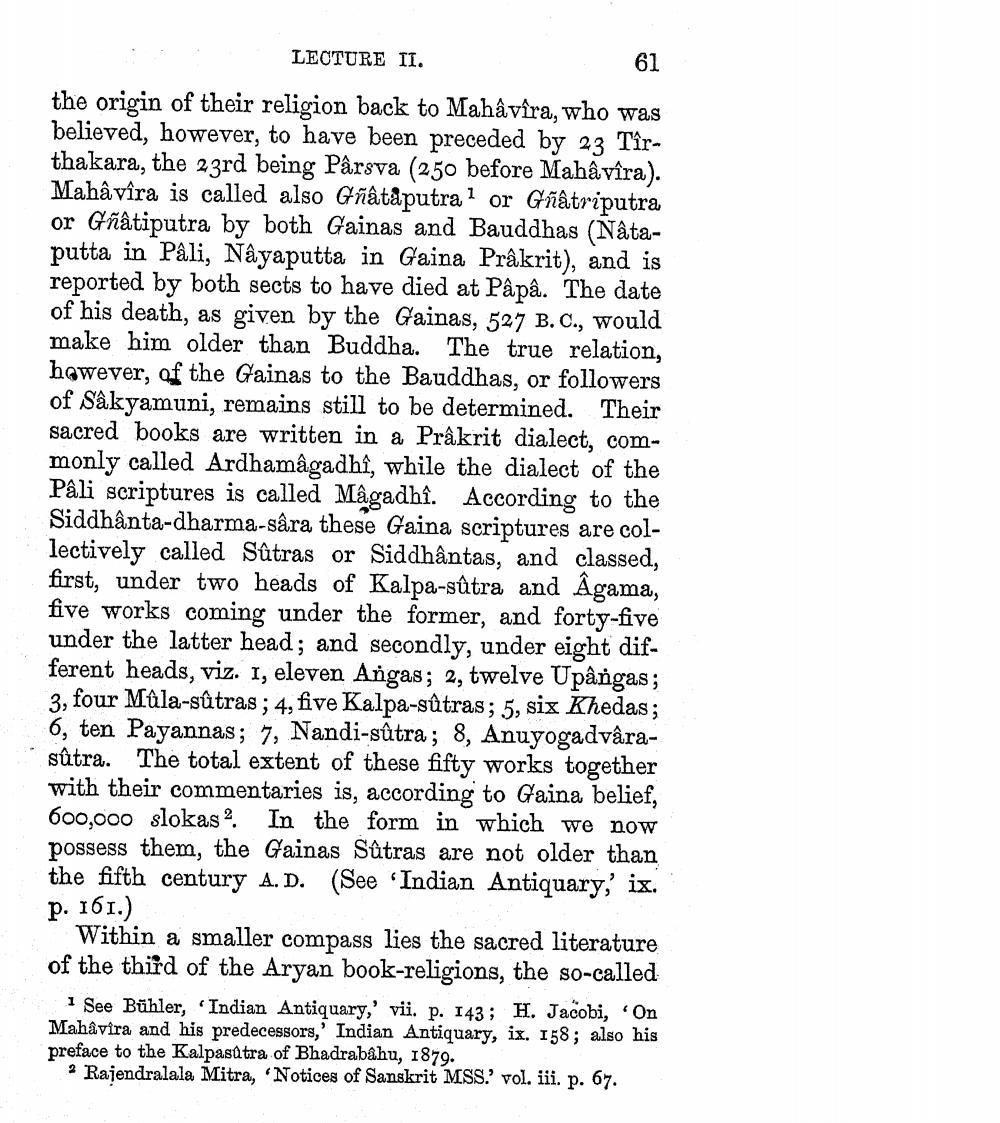________________
61
LECTURE II. the origin of their religion back to Mahâvîra, who was believed, however, to have been preceded by 23 Tîrthakara, the 23rd being Pârsva (250 before Mahâvîra). Mahâvîra is called also Gñâtåputral or Gñâtriputra or Gñâtiputra by both Gainas and Bauddhas (Nâtaputta in Pali, Nâyaputta in Gaina Prâkrit), and is reported by both sects to have died at Pâpâ. The date of his death, as given by the Gainas, 527 B.C., would make him older than Buddha. The true relation, however, of the Gainas to the Bauddhas, or followers of Sâkyamuni, remains still to be determined. Their sacred books are written in a Prâkrit dialect, commonly called Ardhamâgadhî, while the dialect of the Pâli scriptures is called Mâgadhî. According to the Siddhânta-dharma-sâra these Gaina scriptures are collectively called Sûtras or Siddhậntas, and classed, first, under two heads of Kalpa-sûtra and Âgama, five works coming under the former, and forty-five under the latter head; and secondly, under eight different heads, viz. I, eleven Angas; 2, twelve Upângas; 3, four Mûla-sûtras ; 4, five Kalpa-sûtras; 5, six Khedas; 6, ten Pavannas; 7. Nandi-sūtra; 8, Anuyogadvârasûtra. The total extent of these fifty works together with their commentaries is, according to Gaina belief, 600,000 slokas?. In the form in which we now possess them, the Gainas Sûtras are not older than the fifth century A. D. (See Indian Antiquary,' ix. p. 161.)
Within a smaller compass lies the sacred literature of the third of the Aryan book-religions, the so-called
1 See Bühler, Indian Antiquary,' vii. p. 143; H. Jacobi, "On Mahavira and his predecessors,' Indian Antiquary, ix, 158; also his preface to the Kalpasa tra of Bhadrabahu, 1879.
Rajendralala Mitra, Notices of Sanskrit MSS.' vol. iii. p. 67.




